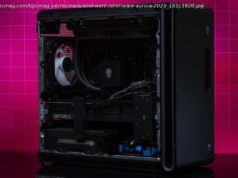Five days, three continents, and four cities: Munich, New York, San Francisco, and Beijing. It may sound like the itinerary of a famous rock band’s world tour,
Five days, three continents, and four cities: Munich, New York, San Francisco, and Beijing. It may sound like the itinerary of a famous rock band’s world tour, but it’s actually something even more exclusive. BMW’s integrated its newest concept car into a jet, and set off on the iNEXT World Flight to preview its vision of the next generation of electric vehicles.
Beyond the plane, and racking up the frequent flier miles, the core of it is the BMW Vision iNEXT. Loaded inside a Lufthansa Cargo Boeing 777F – widely regarded as the most efficient and most advanced cargo aircraft in the world – the goal was straightforward. Give a select panel of around 300 journalists a sneak peek into the future of electric and autonomous mobility.
“The BMW iNEXT is the future of mobility. It’s more than just a car. It’s a trailblazer for all relevant future technologies,” Klaus Frohlich of BMW AG said of the concept. “The iNEXT integrates all our strategic initiatives in one format.”
In the process, it picks up the baton where the BMW i3 left off. BMW’s electric city car proved surprising with its angular aesthetic back when it launched in 2013, and its design remains divisive to this day. I suspect the iNEXT will prove to be even more controversial, though that’s something BMW says it’s embracing.
“BMW iNEXT exists to generate creative, pioneering ideas which transform the way we think about mobility,” Adrian van Hooydonk, Senior Vice President of BMW Group Design, says of the car. “The BMW Vision iNEXT marks another big step on that journey of transformation, showing how more intelligent vehicles can make our lives easier and more beautiful.”
While a Tesla Model S or Model X might not raise too many eyebrows when placed side-by-side with a conventional sedan or SUV, respectively, BMW wants its car to stand out. It’s designed to draw attention to the fact that it’s a Level 3+ to full-autonomous vehicle, for a start, capable of doing at least some of the driving for you.
Despite the i3 resemblance, the Vision iNEXT is actually more akin to the X5 in its proportions. It’s relatively low for an SUV, though, which BMW refers to as a SAV (Sport Activity Vehicle): a silhouette closer to that of a sedan, though raised higher off the ground courtesy of bigger wheels. The striking paintwork – Liquid Greyrose Copper, in BMW-speak – evolves from a warm copper through to dark rose in its hue, as it floods across the carefully sculpted forms and surfaces.
The exterior design is what you would expect from a concept car. The ultra-large and exaggerated trademark BMW kidney grilles are now interlinked: there are clear parallels the all-new X5 I drove recently, and this bigger, bolder transformation. Where the X5 gets mesh, though, in the iNEXT it’s blanked off. The electric drive train doesn’t require the same cooling, and so BMW repurposes the panel to accommodate the bevy of sensors required to deliver fully autonomous driving.
It’s flanked, meanwhile, with ridiculously slim headlights, while the windscreen extends back to form a large panoramic roof. I suspect that might prove a little taxing during the blazing heat of summer, but it does give an incredible view of the interior from outside, and indeed lashings of natural ambient light once you’re sat down.
From the side, the two-box proportions and extended roofline of the iNEXT underscore the impression of space. Short overhangs front and rear, coupled with a long wheelbase similar to that of a sporty luxury car, are bracketed by huge, 24-inch wheels with an aerodynamic 3D design. Yes, there are side cameras rather than regular mirrors, but BMW cranks up the concept drama by making them 360-cameras too. Door handles have been done away with, in favor of touch-sensitive illuminated graphics. Touch a symbol and the B-pillar-free space allows for seriously easy entry and egress.
Out in the back, the horizontal lines and surfaces give the iNEXT a wide and more dynamic stance. The slim headlights are echoed by equally-slender taillights, extending toward the rear flanks. It looks good, but it’s all also done in the name of aerodynamics. Airflow is designed to flow over the roof, toward the integrated spoiler at the back, while aero edges smoothen the rush of air. The prominent rear diffuser will ensure turbulent air is ejected cleanly as the iNEXT glides down the road.
It’s the interior, though, which separates the iNEXT from other EVs. As you’d expect, the lengthy wheelbase ensures a roomy and spacious cabin, but the journey of unusual design begun by the i3 is picked up in earnest in this new concept. More like a contemporary and meticulously-furnished living room than what you’d expect in a vehicle, it includes lounge sofas with exceptional comfort in the rear. Natural materials abound, across the door panels and extending across the dashboard. There’s an abundance of walnut wood, soft fabric, and microfiber, while the carpets feature a three-dimensional Jacquard weave.
The center console is nothing short of a premium piece of designer furniture. With a matte and open-pore wood finish, similar to what you might expect from an expensive coffee table, it hides a small shelf underneath outfitted with illuminated crystal glass. Each crystal refracts the light, to lavish the interior with reflections. It’s more like being driven around in a 5-star boutique hotel than any car out there today.
Still, BMW isn’t ready to give up the mantra of being the Ultimate Driving Machine. While it envisages the iNEXT as operating at Level 4 autonomy – with the car responsible for driving itself in most situations – it’s also happy to hand over the controls to a human driver.
Courtesy of the new Intelligent Personal Assist – basically an AI assistant that BMW plans to roll out to its production cars later this year – you might simply say “Hey BMW, I want to drive the car!” and the iNEXT will do the rest. The steering wheel unfolds from the dashboard, as do the pedals and other controls. BMW offers two different driving modes, too, Boost and Ease. The former is intended for more purposeful driving, with a more traditional layout. Ease, though, sees the steering wheel pull back slightly and the displays offer up suggestions for exploration in the nearby environment. When you’re done, saying “Hey BMW, control is yours” or words to that effect will have the iNEXT take back the helm and the manual controls whir away.
That emphasis on hiding technology when it’s not in use is something BMW is referring to as “Shy Tech”: the gadgetry only makes itself clear when actively required by the driver or passengers. It’s a far cry from modern vehicles, with their numbing array of touchscreens and dashboard knobs. Besides the steering wheel and elegantly placed displays for the driver, there aren’t any traditional control stacks on the dashboard of the iNEXT.
Much of what would typically be achieved through those interfaces, BMW sees being handled by the Intelligent Personal Assistant.






